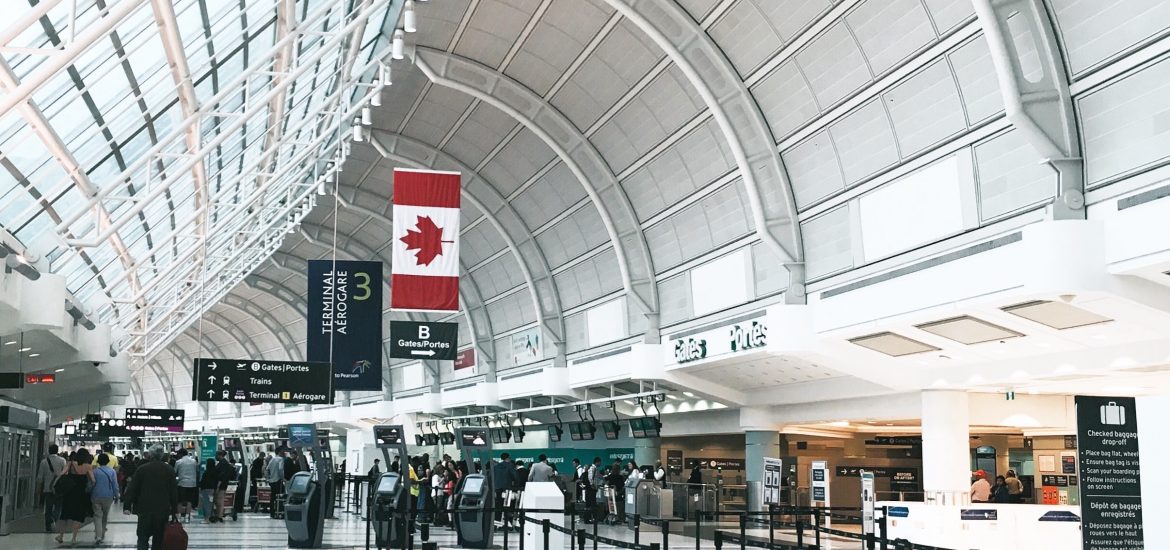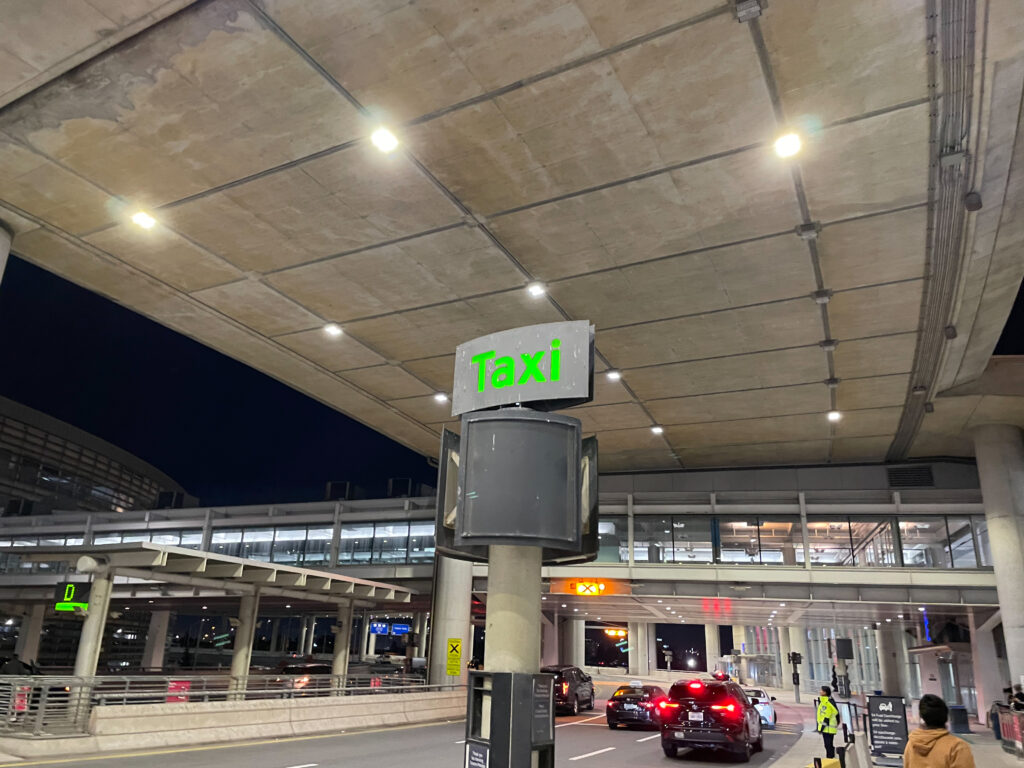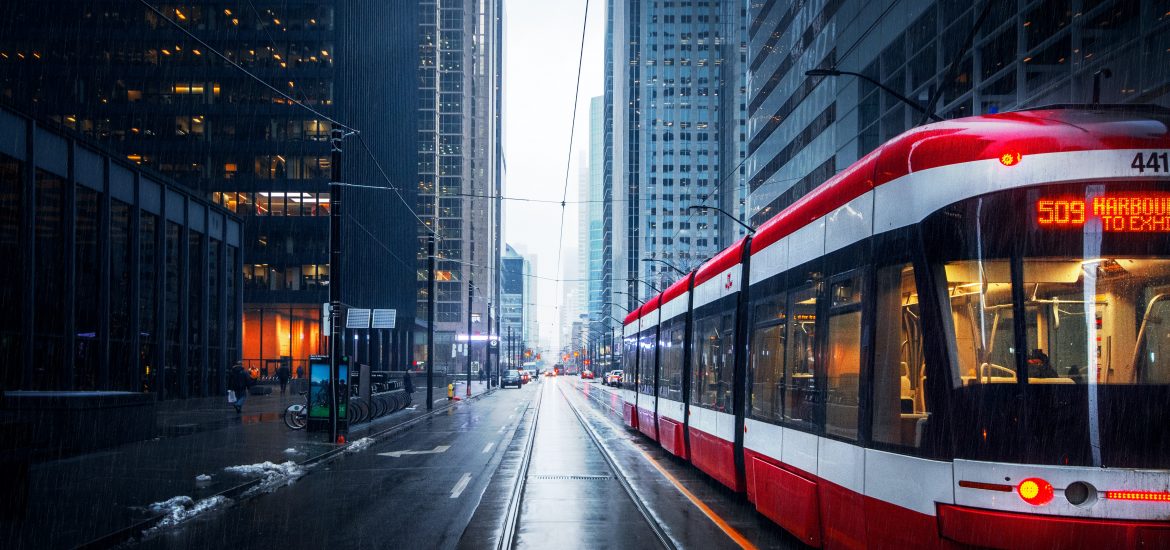So, you’re thinking about visiting Toronto, eh? That’s awesome! Toronto is truly a world-class city, bustling with culture, and filled with so many iconic places to visit.
Pro-tip: Checkout my list of the 22 Must-Visit Attractions in Toronto to help you plan your visit!
But, if you’re new to the city or flying in, how do you get around Toronto and visit all the wonderful sights and sounds emanating from the “center of the universe”?
Well, in this guide I’ll explain how to get to Toronto from the airport. And, how to get around Toronto via all the public transportation options including subway, streetcar, buses, and bike rental!

How To Get To Toronto From The Airport
Many travellers visiting Toronto arrive via Pearson International Airport (YYZ). The airport is located approximately 30 km outside of downtown Toronto.
So, to get into Toronto from the airport you pretty much have two options – by taxi or by train. Let’s briefly review each option.
Pro-tip: Check out my in-depth guide How to Get to Toronto From the Airport for more information and additional options.
Taxi From Toronto Airport
A continuous stream of licensed taxi and limos are available to take patrons from the airport into Toronto and the surrounding cities.
Taxi and limos charge a flat rate based on zones. A typical taxi fare from the airport to downtown Toronto is approximately $56 CAD.
Pro-tip: You can use this online fare calculator to determine the cost of a taxi to your destination.

Train From Toronto Airport
To save a bit of money, you should consider taking the public train that operates between the airport and Toronto.
The Union-Pearson Express, or UP Express, is a low-cost, fast, and reliable way to travel between Pearson International Airport and Toronto.
- Travel time takes about 25 minutes and trains depart every 30 minutes.
The UP Express costs $12.35 CAD per adult for a one-way fare, which is considerably cheaper compared to a taxi.
Tickets can be purchased online here, or once you arrive at the train station which is connected to the airport. Just follow the signs for “Train to City”, jump on, and ride it all the way into the Toronto.
The final stop is Union Station, which is the primary transportation hub in Toronto.

How To Get Around Toronto
Toronto is a massive city, dotted with so many great places to visit. And since it’s so large, getting around can be challenging if you are new to the city.
Thankfully, however, there are plenty of public transportation options. From subways and streetcars to buses and bikes, Toronto’s public transit options are fairly robust and expansive.
So, if you need to get from the CN Tower to the Royal Ontario Museum to Casa Loma, I’ve got you covered!
Let’s run through all the options…
Union Station – Toronto’s Transportation Hub
Union Station is the main transportation hub of Toronto. Located at Front and Yonge Street in the heart of downtown, trains, inter-city buses, and the subway converge here.
The Union-Pearson Express and ViaRail trains terminate at Union Station, which brings visitors from the international airport and farther regions of Ontario into the city.
The GoTrain and GoBus also terminate at Union Station which brings daily commuters into Toronto from neighboring cities. Riders can then jump onto the subway system at Union Station.
The Toronto Transit Commission (TTC) operates the subway, streetcars and buses in Toronto, whereas Metrolinx operates the GO Transit system for the Greater Toronto area.
Pro-tip: The two main transit systems are independent of one another, so separate fares are required. However, PRESTO cards can be used interchangeable between systems. Currently, no discounts can be applied if using both transit systems back-to-back.
Toronto Subway System
There is no better way to quickly get around Toronto than by subway. There are two main subway lines, conveniently called Line 1 Yonge-University and Line 2 Bloor-Danforth. There are also two additional subway lines (Line 3 and 4) but they are well outside the downtown core area.
- Line 1 runs north-south in a U-shape, largely along Yonge street and University avenue.
- Line 2 runs east-west across Toronto, primarily along Bloor street and bisecting Line 1 at three stations.
A detailed map of the Toronto subway system can be found here.
- An adult one-way subway fare is $3.25 CAD, and paper transfers can be obtained if you pay by cash.
You can hop between subway, streetcar, or bus, along a direct path from point A to B.

Toronto Street Cars & Buses
The Toronto streetcar and bus network connects riders to all parts of the city not covered by the subway. The sheer number of streetcar and bus routes make it a perfect way to navigate around the city.
Toronto streetcars are unique since they run on tracks along the road and are powered by electricity.
- Streetcar boarding is via all doors. Sometimes, streetcars stop in the middle of the road so be careful boarding and disembarking.
- You can purchase fares on buses and streetcars via fare vending machines, but exact cash is required.
A complete map of Toronto streetcars and bus routes can be found here.
The combination of the subway, streetcars and buses lets you see every inch of the city, quickly and easily.
Pro-tip: Consider purchasing a subway, streetcar and bus day pass. A day pass costs $13.50 CAD and gives you unlimited access to the transit system. You just need to use the transit system 5 times or more for it be worth it!
Bike Rentals – Bike Share Toronto
Another fantastic option to see a whole lot more of Toronto on your own terms is via biking. Thankfully, the city has invested heavily in dedicated bike paths and the Bike Share Toronto program.
Bike Share Toronto is essentially a network of bike stations with bikes available to be rented.
- A 24-hour access pass for $7.00 CAD can be purchased at any bike kiosk.
- Unlocking instructions are provided once your pass is purchased.
- From there, you can enjoy unlimited 30-minute station-to-station trips!
The trick to using the bike share program is to return your bike to a kiosk within 30-minutes to not incur any overage fees ($4.00 per additional 30-minutes). Simply dock your bike and unlock another one to continue riding, overage fee-free!
The bikes are well maintained, with lights and adjustable seats, and come with a small basket. However, helmets are not provided. E-bikes are also available, and can be found using the PBSC app.
Pro-tip: I highly suggest downloading and using the PBSC / CycleFinder app. The app gives you convenient access to the Bike Share Toronto program. Purchase passes, plan routes, check bike station availability, and even search e-bike locations!
